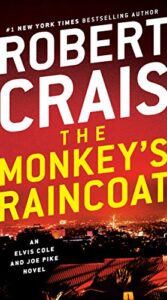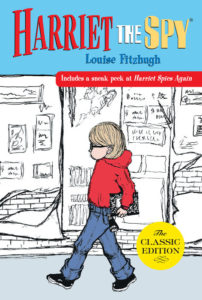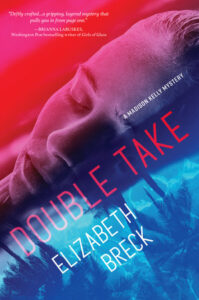As a licensed private investigator, I’ve followed people for days without them noticing me. But I wasn’t driving a red Ferrari with personalized plates—that would get me noticed in the first block. Can you imagine seeing a car like that behind you as you go to the bank, then the post office, then the mall? My surveillance vehicle can’t have anything distinctive about it, and it certainly can’t be a bright red car that cost over a hundred grand. Magnum PI was a popular TV show, and you’re allowed to love it; but even before I became a PI, I couldn’t watch it. It just wasn’t realistic to me.
And so it was with my reading. I became a PI in my 20’s, so my taste in authors in my favorite genre, mystery, soon became shaped by the realism of the PI’s activities. I could forgive not including specific details (we do have to go to the bathroom when on surveillance), but when something unrealistic was done, I’d have to put the book down.
Example: A PI in a book set in the 1980s needs a vehicle owner’s name. She calls the DMV and pretends to be the wife, “checking if the insurance is okay,” and manages to get the DMV rep to give the owner’s name. First of all, the CA DMV doesn’t keep records of your insurance except in unusual circumstances, but here’s the best part: at that time, any citizen could walk into the DMV with a license plate number, pay a dollar, and get the name of the owner. Eventually that law was changed, thankfully, but an error like that in a book throws me out of the story.
Nobody’s perfect, and I’m sure someone could find errors in my books—but they won’t be about a PI’s actions. Many of the surveillances and exciting investigations in my books actually happened to me, or else I put myself in the main character’s shoes and said, “What would I do here?” As a result, there is always realism to what my heroine, Madison Kelly, does as a PI.
I thought you might like to see some of the authors who get it right every time, including an author whose books have actually made me a better PI. I haven’t read every mystery, plus I tend to stick with those authors I love; therefore, I’m sure there are excellent authors who aren’t mentioned on this list. I could do a top ten or even a top fifty, so don’t fret if your favorite author isn’t here. Rather than a list of the only authors to get it right, these are just five of my favorites.

Jane Whitefield
By Thomas Perry
Jane Whitefield is the best PI in fiction. And technically she isn’t even a PI. She takes people who are in danger and gives them new lives. The way she does it almost looks like magic—they disappear from one place and appear in another. She uses disguises, and she studies the bad guys and their lair before deciding on a plan. Her father was Native American, Seneca, and she uses the Seneca culture and customs to help her make moral and investigative decisions; there is a spirituality to her choices that is compelling. The way she studies a scene to look for the person who doesn’t fit—the bad guy searching for her client—helped me to study the subjects of my investigations. She specializes in how to blend in—which I then used in an investigation where I had to follow a guy for three days all over Nevada: being 5’11” with blonde hair, I don’t normally blend in well. Jane taught me how to do it, and my subject didn’t spot me the entire time.
Thomas Perry has a new Jane Whitefield book coming out in November called The Left-Handed Twin, and I can’t wait. My favorite is the second in the series, Dance for the Dead, and I’ve read it numerous times.

Kinsey Millhone
By Sue Grafton
Kinsey Millhone is popular, but did you know she is also accurately depicted? I specialize in insurance fraud, and that is how Kinsey got her start as well. I began my career before the internet took over, back in the days when you had to go to the Hall of Administration or courthouse for records, or to the library for the cross-directory to find a name based on a phone number. This is how Kinsey did investigations as well, because Sue Grafton started writing Kinsey in the 1980s. But soon after I became a PI, the world changed: I no longer had to visit government buildings, I could access records on the Internet. Even though Sue decided to keep Kinsey the same age and in the 1980s, where there were no personal computers, I still appreciated the accuracy of Kinsey’s surveillance and interview techniques. The little black dress that Kinsey kept in the back of her car, which could be dressed up or down depending on the circumstances, was similar to my own bag of tricks. I always did surveillance in clothes that were versatile and could get me into a nice restaurant or allow me to walk into a dive bar, depending on where my subject led me during the tail. I don’t know how Sue Grafton did it, but Kinsey’s investigation skills were always spot-on.
Start with A is for Alibi and keep going.

Nero Wolfe
By Rex Stout
My favorite Nero Wolfe mystery is the sixth in the series, written in 1939, called Some Buried Caesar. As always, Archie Goodwin is Mr. Wolfe’s sidekick and eyes, ears, and legs, since Mr. Wolfe is a self-described fat man unwilling to propel himself places via moving objects like cars and planes. So it is strange that my favorite is one where they’ve left their New York brownstone and ventured out into the country for a fair where Mr. Wolfe is going to show his prize orchids. And of course there is a murder so Mr. Wolfe sends Archie out to find clues to solve the mystery, while he sits drinking beer at their host’s home. I’ve read over 35 Nero Wolfe mysteries, repeatedly, to the point where I can recite some of the witty repartee. What makes Rex Stout’s PIs accurate? Mr. Wolfe’s thought processes, the way he discards illogical arguments and focuses only on the relevant facts to solve the mystery. Also, Archie knows how to tail someone, on foot, in New York city, which I’ve never tried and I shudder at the thought. But Rex Stout writes it exactly how it would be done; it’s like a training manual. I quote from his books in my own, especially this phrase: “In a world of cause and effect, all coincidences are suspect”; I have used that dictum myself when working cases.

Stephanie Plum
By Janet Evanovich
Due to the comedic nature of this series, a person could think that Stephanie’s work isn’t presented realistically. In addition, this is another “technically, not a PI,” book series, but as an unlikely bounty hunter, Stephanie and her sidekicks do a lot of skip-tracing, finding someone who has skipped out on their bail, and that is what PIs do as well. There is accuracy in the way they locate their subjects, both in searching internet and other records, pounding the pavement to track the person, and even Stephanie pretending to be someone she’s not in order to get information. Sure, there is hilarity and downright schtick, but even a real-life PI can suspend some disbelief to have a good laugh. Janet gets it right on the serious stuff, where it matters.
One for the Money is a good place to start.

Elvis Cole
By Robert Crais
Humor is the only way to make it through the hard times, and I’ve had a few. So I appreciate an author who can infuse humor into a dramatic moment in a realistic PI story. You will always find humor in my books. And so it is with several on this list, including Robert Crais: he has us chuckling at Elvis and his penchant for insouciant knickknacks; his cat who will claw you to death and then want his tummy rubbed; and his cohort Joe Pike who has arrows tattooed on his arms pointing forward, emotionless behind mirrored sunglasses. Everything Robert has Elvis and Joe do is realistic, especially with tailing subjects and interviewing witnesses. I especially like the way Elvis greets clients: they come in all forms, and he represents well how a PI has to take work they may not want in order to pay the rent.
Start with Monkey’s Raincoat and read them in order, although they stand alone well.
And one more special mention…

Harriet the Spy
By Louise Fitzhugh
I couldn’t make this list without mentioning the one who started it all for me, Harriet the Spy—I believe I am a PI today because of her. By age 10 I carried that paperback around with me like Harriet carried her notebook. I imagined I was Harriet: hiding in dumbwaiters while holding my breath; taking notes on neighbors; in general, living an independent life by age 11. I re-read the book after a 45-year break and was surprised at the things I’d forgotten: that Harriet wanted to be a writer (me too!); that she was bullied mercilessly by her classmates (me too). Harriet was lonely and isolated and took comfort in reading and in her own company; I may have blossomed in my later years, but at 10 I felt the same. It seems Ms. Fitzhugh got a lot more than just investigations right in this book.
The most realistic aspect of Harriet’s investigating is how she enjoys the time she spends alone, observing life, noting what she sees. I enjoy sitting by myself in my car for hours, making up stories about the people I see, enjoying the humanity that most people reveal only when they think no one is watching. Just like Harriet, in the quiet I ponder not just the case, but life. I identify with her the most of any character on this list.
***


















